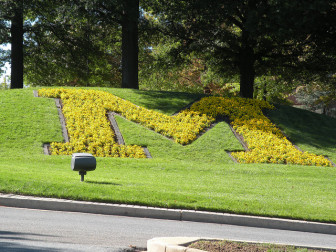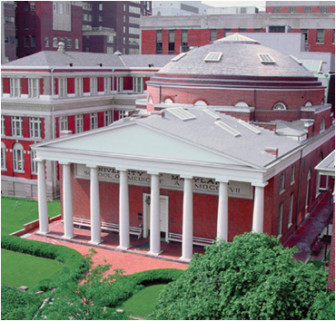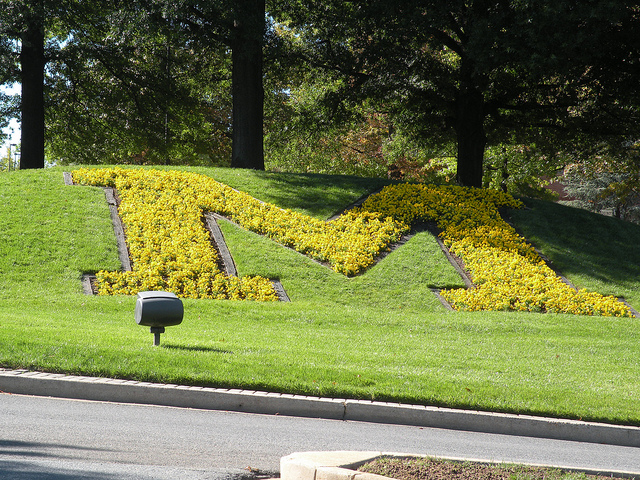By Laslo Boyd
For MarylandReporter.com

University of Maryland by carmichaellibrary with Flickr Creative Commons License
Five years ago the Board of Regents of the University System of Maryland concluded that a full-fledged merger of the system’s flagship campus at College Park with the professional schools in downtown Baltimore created more problems than the presumed benefits. Now the idea is back in full force before the Maryland General Assembly.
The proposal builds on the success of the two campuses in establishing a strategic partnership as the alternative to merger five years ago. Supporters point to impressive gains in joint research, additional grants and commercialization.

University of Maryland Baltimore
Increased research collaboration and a greater emphasis on technology transfer and commercialization are both highly desirable and might well bring significant benefits to Baltimore. The bill codifies the existing partnership, making it no longer dependent on the willingness of the two presidents to collaborate, widely seen as a positive outcome.
With Senate President Mike Miller as its chief patron, the proposal had a hearing Tuesday before the Senate Budget and Taxation Committee. Don’t be confused by the title of SB 1052, referring to a “Strategic Partnership” between the two universities; this is a merger waiting to happen.
Opinions about the proposal are largely impacted by one’s geographic perspective. Supporters of College Park see nothing but positive results from a merger and find no downsides at all.
One immediate benefit, and the one most touted the last time, is a dramatic improvement in national rankings when the federal research dollars of the two campuses are combined.
By itself, that’s clearly a good outcome, although it still has to be considered alongside other results.
One president or two?
As currently written, SB 1052 provides that each campus retain its president but allows for the possibility that at some point in the future the Board of Regents could appoint a single president for the merged university. No one imagines that a single president would have a primary office anywhere but in College Park.
That’s a reality that makes many people at UMB skeptical or even opposed to the legislation. If a single president became a reality — as College Park President Wallace Loh urged at the hearing — UMB officials believe that the professional schools would get less attention from the university administration. They also fear that there would be less focus on involvement with the Baltimore community around the campus.
If history is any guide, that’s a reasonable concern given the very limited success that College Park has had over the years in bringing programs to Baltimore or finding other ways to have a significant presence in the city. Baltimore would no longer be a headquarter city, but instead be reduced to a regional center.
The bill has a number of financial incentives, a significant addition to the proposal five years ago. However, the dollars for a College Park center are larger and permanent while the Baltimore center would receive only a finite period of funding.
Lots of unknowns
There are a lot of unknowns in this proposal. How they are resolved—the old line about the devil being in the details—will have a direct bearing on the impact of this proposal.
The most glaring question may be with whether the Baltimore campus will retain a president in the future after its current head, Jay Perman, leaves.
A second is whether the mandated funding in this bill would survive the legislative process and any objections that Gov. Hogan may have. Moreover, the size and nature of the commitment to the Center for Advanced Ventures in Baltimore and the Center for Economic and Entrepreneurial Development in College Park are likely to undergo debate and possible adjustments as the proposal is reviewed.
A third question mark involves clarifying exactly what the bill envisions behind more collaboration. Some of the supporters seem to be describing a single university in the future. Technology may have reduced the significance of distance, but it hasn’t totally eliminated it.
The best example involves university parks around the country. The successful ones are part of or directly adjacent to a campus and allow mingling and interaction. The failures, such as the College Park effort at the intersection of 50 and 301, were separated by too great distances to allow easy collaboration.
The University System has called for further review and study in order to sort out these and other questions in the bill. Given a divided Board of Regents and the scope of this proposal, that’s a reasonable and understandable reaction. How the General Assembly, and particularly President Miller, respond remains to be seen.
Unintended consequences
There will be some unintended consequences if this proposal is enacted. Of particular significance is how the University System of Maryland will be fundamentally altered.
The Board of Regents will be responsible for one gigantic institution with the overwhelming share of the overall budget and a number of much smaller universities.
While it may be possible to find the right balance in time and attention to such a wide variety of institutions, it won’t be easy and will certainly be a far different task than that the board currently faces.
Another question not yet resolved is whether College Park will play a greater educational role in the Baltimore area as a result of the merger. Proponents might well hope for that outcome, but such a step would have a direct impact on the other higher educations institutions in the Baltimore region.
In addition to the educational issues raised by SB 1052, there is a swirl of political drama surrounding this proposal.
An objective analysis would conclude that there are reasonable arguments on both sides of this issue. The assessment of the politics strongly suggests that some version of the bill will be enacted, if not in this session, at least by the end of the four year term of this legislature and its Senate president.




Recent Comments